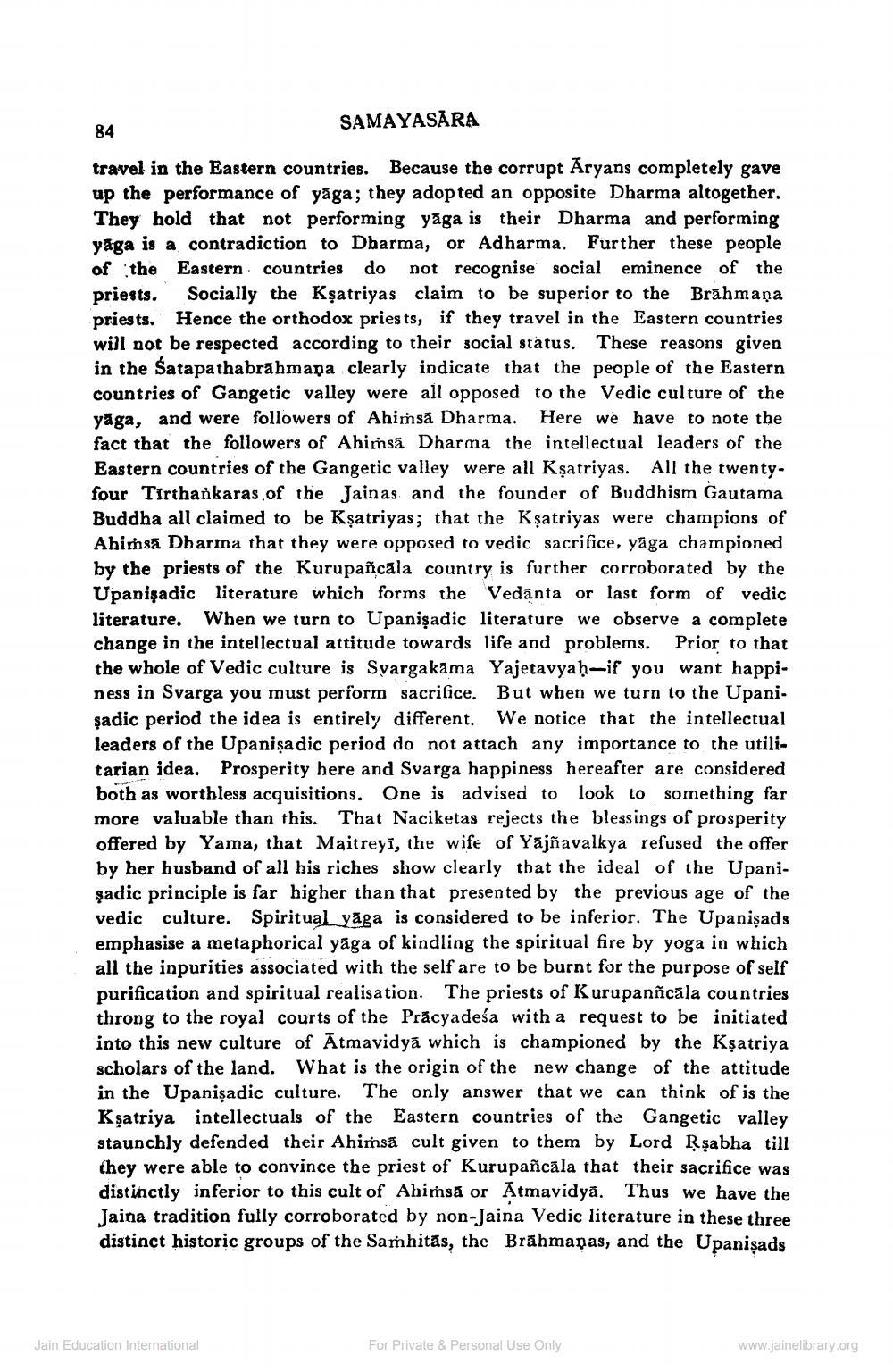________________
84
SAMAYASARA
travel in the Eastern countries. Because the corrupt Aryans completely gave up the performance of yāga; they adopted an opposite Dharma altogether. They hold that not performing yaga is their Dharma and performing yaga is a contradiction to Dharma, or Adharma. Further these people of the Eastern countries do not recognise social eminence of the priests. Socially the Ksatriyas claim to be superior to the Brāhmana priests. Hence the orthodox priests, if they travel in the Eastern countries will not be respected according to their social status. These reasons given in the Satapathabrahmana clearly indicate that the people of the Eastern countries of Gangetic valley were all opposed to the Vedic culture of the yaga, and were followers of Ahimsa Dharma. Here we have to note the fact that the followers of Ahimsa Dharma the intellectual leaders of the Eastern countries of the Gangetic valley were all Ksatriyas. All the twentyfour Tirthařkaras of the Jainas and the founder of Buddhism Gautama Buddha all claimed to be Ksatriyas; that the Ksatriyas were champions of Ahimsa Dharma that they were opposed to vedic sacrifice, yāga championed by the priests of the Kurupañcala country is further corroborated by the Upanişadic literature which forms the Vedānta or last form of vedic literature. When we turn to Upanişadic literature we observe a complete change in the intellectual attitude towards life and problems. Prior to that the whole of Vedic culture is Syargakāma Yajetavyaḥ-if you want happiness in Svarga you must perform sacrifice. But when we turn to the Upanisadic period the idea is entirely different. We notice that the intellectual leaders of the Upanişa dic period do not attach any importance to the utilitarian idea. Prosperity here and Svarga happiness hereafter are considered both as worthless acquisitions. One is advised to look to something far more valuable than this. That Naciketas rejects the blessings of prosperity offered by Yama, that Maitreyī, the wife of Yājñavalkya refused the offer by her husband of all his riches show clearly that the ideal of the Upanişadic principle is far higher than that presented by the previous age of the vedic culture. Spiritual yāga is considered to be inferior. The Upanisads emphasise a metaphorical yāga of kindling the spiritual fire by yoga in which all the inpurities associated with the self are to be burnt for the purpose of self purification and spiritual realisation. The priests of Kurupanñcăla countries throng to the royal courts of the Prăcyadeśa with a request to be initiated into this new culture of Ātmavidyā which is championed by the Ksatriya scholars of the land. What is the origin of the new change of the attitude in the Upanişadic culture. The only answer that we can think of is the Ksatriya intellectuals of the Eastern countries of the Gangetic valley staunchly defended their Ahimsā cult given to them by Lord Rşabha till they were able to convince the priest of Kurupañcāla that their sacrifice was distinctly inferior to this cult of Ahimsa or Atmavidya. Thus we have the Jaina tradition fully corroborated by non-Jaina Vedic literature in these three distinct historic groups of the Samhitās, the Brāhmaṇas, and the Upanisads
Jain Education International
For Private & Personal Use Only
www.jainelibrary.org




